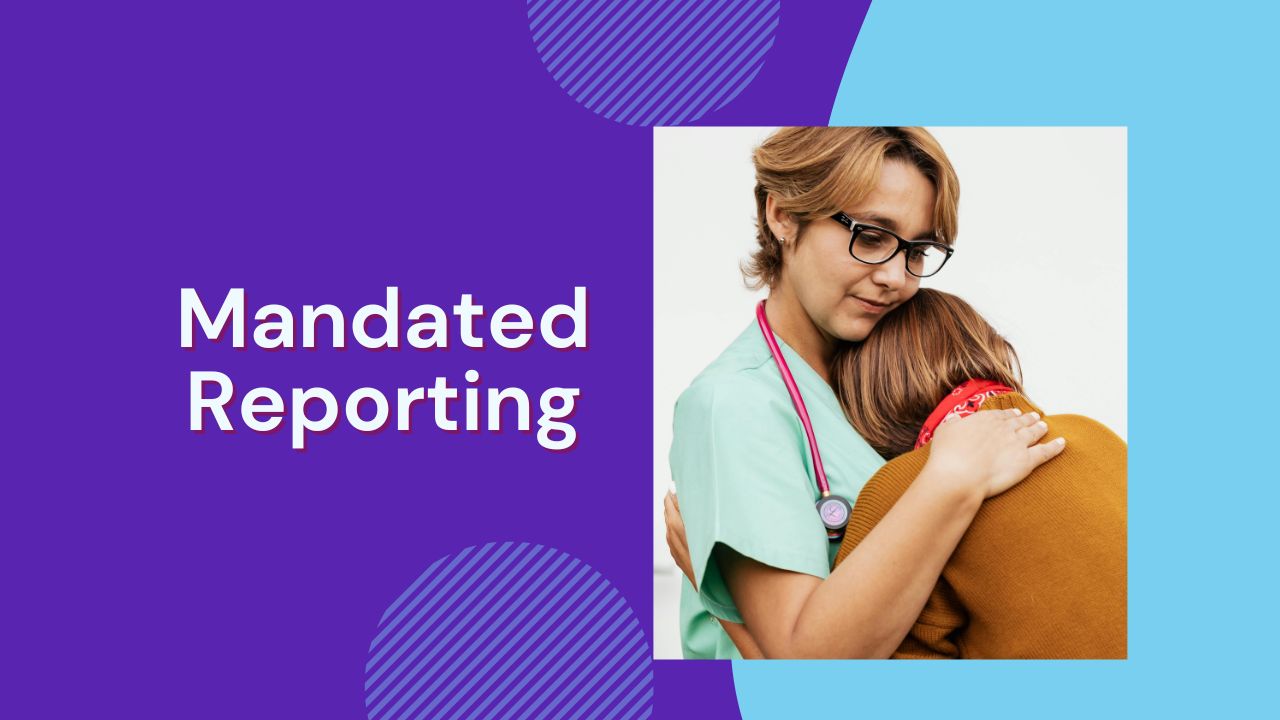Is crying subjective or objective? Is it data that should be included in a nursing report? See what you think after reading this article.
The difference between subjective and objective data in nursing is in the source and nature of the information.
Subjective data is what the patients tell the nurse about how they feel, and objective data is what the nurse observes and measures. The clinician may also ask questions seeking objective or subjective responses.
Documenting the patients’ impressions and feelings and rigorous nursing observations enables accurate diagnoses and fosters trust.
Comparing subjective vs. objective data confirms the initial nursing diagnosis or leads to further examination.
What is objective data?
Objective nursing data is information gathered through physical examination, observation, or diagnostic testing. Objective data is measurable and often numerical.
What are some specific examples of objective data in nursing?
Nurses observe physical findings or patient behaviors, vital signs, laboratory test results, and diagnostic imaging, providing objective data.
These are examples of observed data involving the senses of sight, smell, touch, and hearing:
- A fruity smell or an odor similar to nail polish remover on a patient’s breath is often an alert to diabetic ketoacidosis (DKA), a severe complication of diabetes.
- Nurses can quickly see posture, gait, and balance alterations, which can be signs of a neurological disorder and may call for a differential diagnosis.
- Touch or light palpation can identify an inguinal hernia as the cause of discomfort or pain.
- Hearing or listening for signs of health issues usually involves using a stethoscope to detect abnormal heart, lung, abdominal, or vascular sounds and contributes significantly to accurate assessments.
A physical examination in nursing assessment relies on the senses and systematic techniques to understand the patient’s health status and spot any potential issues. For more details, check out Nursa’s Head-to-toe nursing assessment guide.
Vital signs monitoring
Monitoring vital signs—heart rate, body temperature, respiratory rate, blood pressure, and oxygen saturation—is a routine procedure for early detection of medical conditions, allowing timely interventions. This monitoring can detect urgent, life-threatening emergencies such as sepsis, shock, or stroke.
Regular monitoring provides individual baseline measurements and tracking of how well a patient is responding to the treatment.
Diagnostic testing
Monitoring vital signs can lead to a need for diagnostic testing, which commonly includes complete blood counts, blood glucose tests, lipid profiles, urine analyses, electrocardiograms, and various screenings.
What is subjective data?
Subjective nursing data encompasses the information and impressions the patient, family member, or caregiver shares spontaneously or in response to questions in the initial nursing assessment interview and subsequent conversations. Subjective data is qualitative and non-numerical.
Patients’ comments about discomfort, pain, feelings, experiences, or concerns give the nurse clues to psychological, sociological, or physiological issues.
What are some common examples of subjective data in nursing?
Subjective data is crucial to patient-centered care, taking the patient’s perspective, perceptions, and preferences into account. The following are some areas of subjective data that nurses usually ask about.
Pain
The most common alert to health issues is pain, which is subjective information. Only the patients themselves can feel it and cannot objectively measure it. To get an idea of the pain level, the nurse often asks the patient to estimate the severity on a scale of one to 10.
Other physical sensations
Dizziness, nausea, headaches, and tiredness or fatigue are all subjective, and they are tips to the medical personnel to check for neurological or cardiovascular issues.
Emotional conditions
Feelings of anxiety, worry, or fear that patients mention regarding their health, situation, or future are common and can indicate both psychological and physical health issues, ranging from anxiety disorders to cardiovascular and digestive problems. Anxiety may also be an indication of substance abuse.
Feelings of sadness, hopelessness, or worthlessness often are symptoms of depression. The patient might mention difficulty concentrating, loss of appetite, or sleep problems, which alert the nurse to investigate possible depression, as well as digestive or nutritional issues, sleep disorders, or medication side effects.
Suicidal thoughts may also come up, and it's crucial for nurses to ask about such thoughts, which can indicate a dangerous complication of depression.
Symptoms and signs in healthcare
In healthcare, signs are what the clinician identifies—objective data—and symptoms refer to what the patient feels—subjective data.
For example, a rash can be felt by the patient and observed by the nurse, but feeling itchy is a subjective symptom that clinicians cannot observe clinically. The nurse will inspect the color, texture, swelling, and fever that can suggest certain viral infections, such as measles or shingles, and other objective signs of bacterial infection, such as red streaks or pus.
The patient will subjectively detect many symptoms or signs, and the healthcare team will find others objectively. Here are some examples of signs and symptoms.
Stomach pain
A patient tells the nurse that she has stomach pain—a symptom subjectively perceived by the patient—and the nurse identifies abdominal tenderness to palpation in the lower right quadrant—an objective sign distinguished by the nurse. The nurse records both in the report.
Additional testing and clinical observation will aid in an accurate diagnosis. Nursing notes often cover helpful subjective data.
Back pain
A patient reports dull back pain in the lower lumbar area that worsens when he sits at the computer for an extended period. The nurse observes the patient’s posture and range of motion.
The straight leg test shows that pain appears at 30 degrees—objective and numerical information. The test agrees with the patient’s report and suggests lumbar spine pathology.
Pros and cons of subjective vs. objective data in nursing
Below are some pros and cons of subjective and objective nursing data regarding understanding, patient care plans, advocacy, communication, cultural considerations, and emotional interference.
In many cases, the pros of each are complementary and can integrate into a more complete assessment, or the pros of one can help overcome the cons of the other.
Pros
Here are some advantages of subjective and objective data in different areas:
Understanding
- Subjective data: Insight into feelings, background, attitudes, and perspective provides context.
- Objective data: Observations are informed by clinical knowledge and expertise.
Care plans
- Subjective data: Knowledge of preferences and priorities enables patient-centered care.
- Objective data: Evidence-based diagnoses offer a baseline to measure and monitor improvement.
Advocacy
- Subjective data: With subjective data, nurses learn about their patients’ needs, values, and beliefs and gain understanding to defend patient autonomy.
- Objective data: By monitoring objective data, nurses detect changes in the patient’s condition and can advocate for necessary interventions.
Communication and trust
- Subjective data: Gathering subjective data helps establish communication and trust in the nurse-patient relationship.
- Objective data: Objective data provides a common language, information, and accuracy for evidence-based decisions, efficient hand-offs, and charting.
Cons
The following are potential drawbacks of subjective and objective data in specific areas:
Cultural and ethical considerations
- Subjective data: Subjective data may be less reliable in some cases due to perceptions or memories influenced by emotional or cultural factors. Language barriers and cultural or social biases may also limit the information provided.
- Objective data: Nurses must be careful not to dismiss subjective information and to document each type of data carefully, seeking clarification for any questions.
Emotional interference
- Subjective data: Fear or anxiety may lead the patient to deny some symptoms.
- Objective data: Vital signs can be affected by anxiety, though the nurse may find a way to calm the patient.
Understanding the differences between subjective and objective data offers nurses a broader perspective.
More examples of subjective and objective data in nursing
The following are also examples of subjective data that the patient, family members, or caregivers may provide:
- Weight loss or gain
- Mood
- Behavior
- Physical appearance
- General discomfort
The following are further examples of objective data nurses gather:
- Weight as shown by the scale and in medical history
- Height
- Body mass index (BMI)
- Tremors
- Skin color
- Edema
- Rashes
How do subjective and objective data determine outcomes?
In general, nurses find three typical combinations of subjective and objective nursing data:
- The two often align and confirm a common conclusion, with the objective data specifying the condition and perhaps alerting to an emergency intervention.
- The subjective data poses health issues, but the initial objective data does not confirm a health problem. However, given the subjective symptoms, the clinician explores further, leading to a diagnosis and effective care planning. Learn more about nursing care plans in this ultimate guide.
- Appreciating subjective data in nursing enhances compliance with the care plan, which nurses observe and monitor using objective measures.
In all cases, serious consideration increases diagnostic accuracy, compliance, and understanding on behalf of the patient and the healthcare team, leading to improved patient outcomes. The following scenarios further illustrate how subjective and objective data in nursing complement each other.
Diagnosis example 1
- Subjective report: The patient reports sharp, stabbing pain in the lower abdomen, rated at eight on a one to 10 scale, and getting worse.
- Objective findings: The clinician identifies tenderness in the right lower quadrant, elevated white blood cell count (WBC), localized inflammation, and an abnormal CT scan.
- Conclusions: Both the subjective and objective information strongly suggest acute appendicitis.
Diagnosis example 2
- Subjective report: The patient reports unexplained weight gain, fatigue, and hair loss.
- Objective findings: Initial data shows vital signs in the normal range, dry skin, but no visible or palpable abnormalities, no swelling, and no significant abnormalities in lab tests. Further testing shows elevated thyroid-stimulating hormone (TSH) levels and goiter, as revealed by a thyroid ultrasound.
- Conclusions: Subjective information prompts further investigation, informing a diagnosis of hypothyroidism.
Diagnosis example 3
- Subjective report: The patient reports a dry mouth, thirst, and a concern about high blood sugar.
- Objective findings: The clinician identifies weight and vital signs within a healthy range and 122 mg/dL fasting blood sugar.
- Conclusions: With a diagnosis of type 2 diabetes, the care plan emphasizes a diabetes-friendly meal plan and glucose monitoring.
Complete and precise documentation of all symptoms and signs is essential to maximizing the benefits of both subjective and objective data.
Is crying subjective or objective?
Crying is usually about feelings and is subjective, but the clinician’s observation of crying is objective.
What objective data would you gather after the patient tells you they have been crying, or if you see them crying?
You might check their medical history to spot any underlying conditions that might cause emotional distress and check their medications to see if this could be influencing the patient's emotional state.
What subjective data would you look for?
You can ask the patient to describe their feelings, perhaps suggesting frustration, sadness, or anxiety. You can also ask about the reasons behind their crying, such as pain, fear, or personal issues. You may also want to find out about their support system, such as family or friends, or other coping mechanisms.
What are objective vs. subjective questions in nursing?
Questions, whether subjective or objective, bring out more information. Objective questions seek quantifiable information, whereas subjective questions seek more qualitative perceptions. Here are a few examples:
Objective questions
- How many times have you vomited today?
- When was your last bowel movement?
- How many hours did you sleep last night?
Subjective questions
- What time of day do you think your pain gets worse?
- What do you think is causing your headaches?
- How do you cope with stressful situations?
Why are objective and subjective data important?
Objective data is factual and not open for interpretation or vulnerable to bias. Overall, objective data does not change depending on the observer or the context. Any trained observer should obtain the same objective data.
On the other hand, pain is an essential piece of subjective data and has even been called the fifth vital sign.
Nursing insight depends on both.
The bottom line: Which is more important?
Ultimately, objective and subjective nursing data are not mutually exclusive—they are mutually essential.
Objective data provides the scientific foundation for diagnosis and treatment. Subjective data usually gives the first alert to health problems and offers a window into the patient's personal experience and lifestyle.
Each informs the other, and together, they provide insight and precision, leading to successful patient-centered treatment.
Wondering how to gather subjective data from non-verbal patients?
Discover 7 tips to aid communication with non-verbal patients.
Sources:











.jpg)

